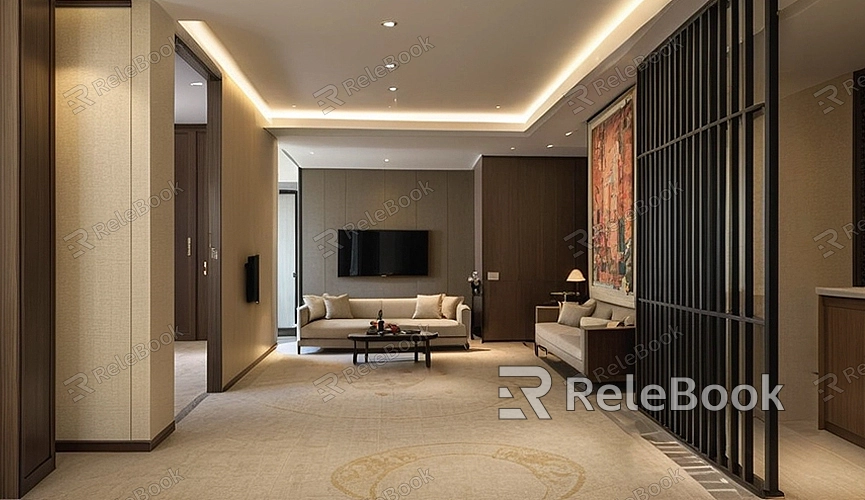How to Mirror Models in SketchUp?
In the realm of 3D design, mirroring is a commonly used technique that significantly enhances workflow efficiency, especially when designing symmetrical objects. SketchUp, a powerful 3D modeling software, offers various tools and methods to help users effortlessly mirror their models. In this article, we will explore the steps involved in performing mirroring operations in SketchUp, along with tips and considerations to ensure you can complete mirroring tasks smoothly and apply them to a variety of design projects.

Understanding the Mirroring Operation
Mirroring refers to the process of creating a symmetrical counterpart by reversing a part or the entirety of a model. This technique is particularly useful in designing buildings, furniture, characters, and more. By using the mirroring function, you can save time, avoid redundant modeling, and enhance the coherence and aesthetics of your designs. In SketchUp, there are several ways to achieve model mirroring, each with its own unique advantages and applicable scenarios.
Preparation
Before performing a mirror operation, ensure your model is complete and that the coordinate axes are properly set. The coordinate axes in SketchUp determine the model's orientation and position. If the axes are not set correctly, the mirrored result may be skewed. You can follow these steps to check and adjust the coordinate axes:
Open your model and go to the "View" menu.
Select the "Axes" tool to ensure the axes align with the center of symmetry of your model.
If necessary, adjust the position of the model to center it.
Once the preparation work is complete, you can begin the mirroring operation.

Using the Move Tool for Mirroring
One of the simplest ways to mirror in SketchUp is by utilizing the "Move" tool. Here are the specific steps:
First, select the part of the model you wish to mirror. You can use the "Select" tool to box in the entire model or just a portion of it.
Choose the "Move" tool and hold down the "Control" key. This activates the copy function.
Then, click on one end of the model and drag it to the other side while continuing to hold down the "Control" key. This will create a copy of the model.
During the dragging process, you can use the arrow keys to lock the movement direction, ensuring symmetry.
This method allows for a straightforward mirroring effect for your model.
Using the Rotate Tool for Mirroring
In addition to the Move tool, the Rotate tool can also be an effective method for mirroring, particularly when precise symmetry is required. Here are the steps to follow:
First, select the portion of the model you wish to mirror.
Select the "Rotate" tool and designate the center point of rotation, typically the model's center of symmetry.
Hold down the "Control" key, then click and drag the model to rotate it to the desired angle, ensuring a symmetrical effect.
After releasing the mouse, check whether the mirrored effect meets your expectations and make adjustments as needed.
This method is suitable for designs that require fine-tuning, ensuring that the mirrored model maintains better symmetry.
Using Plugins for Mirroring
For projects requiring numerous mirroring operations, utilizing plugins can greatly enhance efficiency. SketchUp has many plugins available that can perform mirroring functions, such as the "Mirror" plugin. Here’s how to use a plugin for mirroring:
Open SketchUp’s extension library and search for the "Mirror" plugin to install it.
After installation, restart SketchUp.
Select the part of the model you want to mirror, then find the "Mirror" plugin option in the menu.
Follow the prompts from the plugin to select the mirroring direction and axis.
After setting everything up, the plugin will automatically generate the mirrored model.
The advantage of using plugins lies in their ease of use and powerful capabilities, making them ideal for complex model mirroring tasks.
Considerations
When performing mirroring operations, there are several important considerations:
Model Integrity: Ensure the selected model has no extraneous edges or faces, as this may affect the mirroring outcome.
Symmetry: When setting the mirroring axis, ensure that the selected axis is the centerline of the model to avoid discrepancies.
Order of Operations: When performing multiple mirroring operations, pay attention to the order of actions to avoid disrupting the overall structure of the model.
Performing model mirroring in SketchUp is a highly efficient and practical technique. Through the detailed steps and tips outlined in this article, you should be able to master this operation with ease. Properly utilizing the mirroring feature during the design process can bring more creativity and flexibility to your projects. I hope that you can confidently apply mirroring techniques in your future modeling endeavors. If you need more 3D models and texture resources, feel free to visit Relebook to download what you need.
FAQ
How can I ensure that the mirrored model is completely symmetrical to the original?
Ensure you select the correct axis of symmetry and check the integrity of the model, making adjustments as necessary.
Can I mirror complex grouped models?
Yes, you can select the entire grouped model and then perform the mirroring operation.
What are the advantages of using plugins for mirroring?
Plugins typically offer more features and settings options, allowing for more complex mirroring operations and greater efficiency.
Will mirroring affect the original model?
Mirroring usually does not affect the original model unless you select the "Move" instead of the "Copy" option.
What should I do if the mirrored model does not meet my expectations?
You can undo the operation, readjust the selected portions and the axis of symmetry, and try mirroring again.

